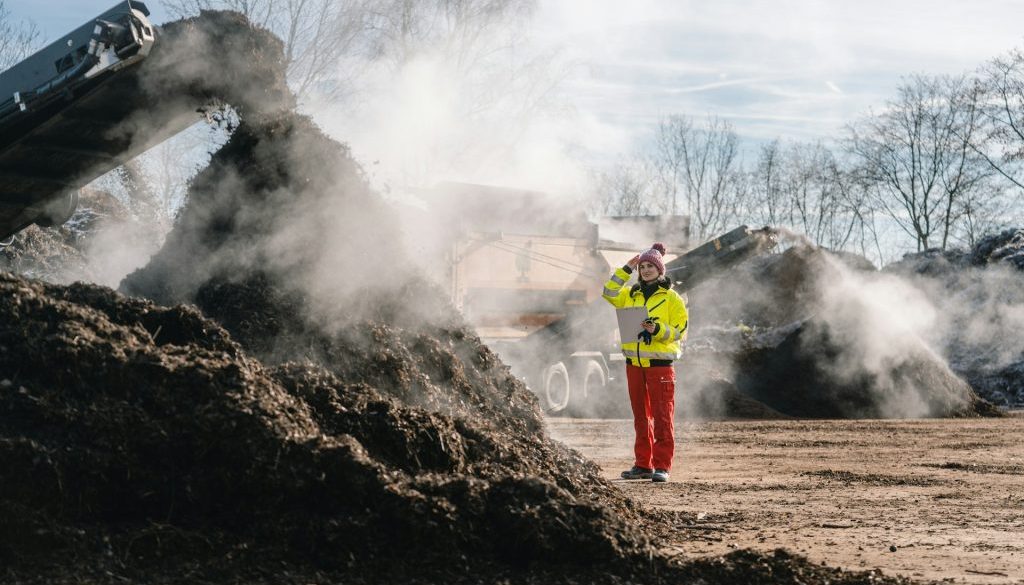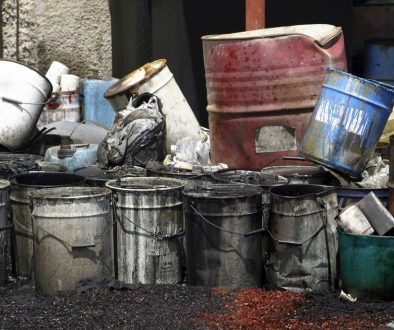The construction industry plays a crucial role in shaping the environment, and as such, it has become increasingly important for businesses in this sector to adopt responsible waste management practices. One key tool to help achieve this goal is the implementation of a Site Waste Management Plan (SWMP). As a family-run skip hire and aggregate company servicing Staffordshire, Enviro Skip Hire are passionate about supporting our clients in their journey towards more sustainable waste management, and in this comprehensive guide, we will outline the core principles and components of an effective SWMP for construction projects.
A SWMP is a strategic document that outlines how waste generated during a construction project will be minimised, managed, and disposed of in an environmentally responsible manner. It helps improve resource utilisation efficiency, reduce project costs, enhance environmental performance, and enable compliance with relevant regulations. A well-designed and executed SWMP can serve as a practical roadmap for managing waste throughout the project lifecycle, from the initial planning stage to the final closeout and review.
The three primary objectives of a successful SWMP are to minimise waste generation, maximise resource efficiency, and ensure sustainable waste disposal practices. Achieving these goals involves a series of interconnected steps, including thorough waste audits, effective communication and training, reuse and recycling of materials, collaboration with responsible waste management partners, and ongoing monitoring and review.
By partnering with waste management experts like us, construction businesses can access valuable support, resources, and expertise to develop and implement a robust SWMP tailored to their unique project requirements. Through our experience and commitment to sustainability, we strive to contribute to the construction industry’s evolution towards a more responsible, environmentally friendly future.
1. Waste Audits and Smart Planning
Conducting a waste audit is a crucial first step in designing a successful SWMP. A waste audit involves gathering data on waste types, volumes, and sources, enabling you to identify areas for improvement and design targeted strategies. Key components of a waste audit include:
- Identifying waste streams: Document all waste materials generated on-site, including their types, quantities, and sources.
- Waste segregation: Establish a system for segregating waste based on categories, such as general waste, hazardous waste, and recyclable materials.
- Analysing data: Analyse collected data to identify trends, establish benchmarks, and set waste reduction targets.
- Creating an SWMP: Develop a comprehensive plan encompassing waste reduction, resource efficiency, and sustainable disposal practices.
2. Training and Communication
Effective implementation, enforcement, and continuous maintenance of your SWMP relies on clear communication and training of all personnel. Key aspects of successful communication include:
- Site inductions: Include SWMP objectives, responsibilities, and protocols in site induction sessions for all staff and subcontractors.
- Training sessions: Offer training sessions on waste reduction techniques, waste segregation, and other relevant SWMP practices.
- Visible reminders: Display signage and visual reminders across the site to keep waste management practices at the forefront of everyone’s minds.
- Regular updates: Share progress updates, challenges encountered, and new objectives with the team regularly.
3. Reuse, Recycling, and Recovery
Incorporating reuse, recycling, and recovery strategies into your SWMP can significantly improve resource efficiency and minimise waste disposal needs. Consider implementing the following practices:
- Reuse and repurpose: Encourage on-site reuse of materials and repurposing of waste, reducing waste generation and transportation costs.
- Material exchange: Promote collaboration between sites and subcontractors to exchange excess materials, facilitating recycling and reuse of resources.
- Recycling facilities: Establish dedicated facilities for recycling waste on-site or partner with an expert waste management company like us to manage recycling efforts.
4. Hazardous Waste Management
Hazardous waste management is a vital aspect of an effective SWMP, as it ensures the safe and compliant handling and disposal of any hazardous substances present on-site. The following are essential steps to address hazardous waste:
- Identification: Clearly identify hazardous waste materials on site.
- Segregation: Store hazardous waste separately from other waste types to avoid contamination and safety hazards.
- Proper disposal: Partner with licensed waste management providers for the safe disposal of hazardous waste in compliance with regulations.
Conclusion
Developing and executing an effective Site Waste Management Plan lies at the heart of responsible waste management efforts for construction projects. Construction businesses can greatly improve their environmental performance, reduce costs, and comply with regulatory requirements by conducting thorough waste audits, fostering clear communication, promoting reuse and recycling, and managing hazardous waste appropriately. Regardless of the scale or complexity of your construction project, adopting a comprehensive SWMP can lead to lasting benefits for your business, the environment, and future generations.
If you’re looking for expert guidance and support in developing your construction project’s SWMP, Enviro Skip Hire’s team of waste management specialists is here to help. With regards to our commitment to sustainability and waste minimisation, we offer tailored solutions and planning assistance to ensure your project aligns with best practices and environmental goals. Together, we can create a more sustainable future for the construction industry and beyond.




